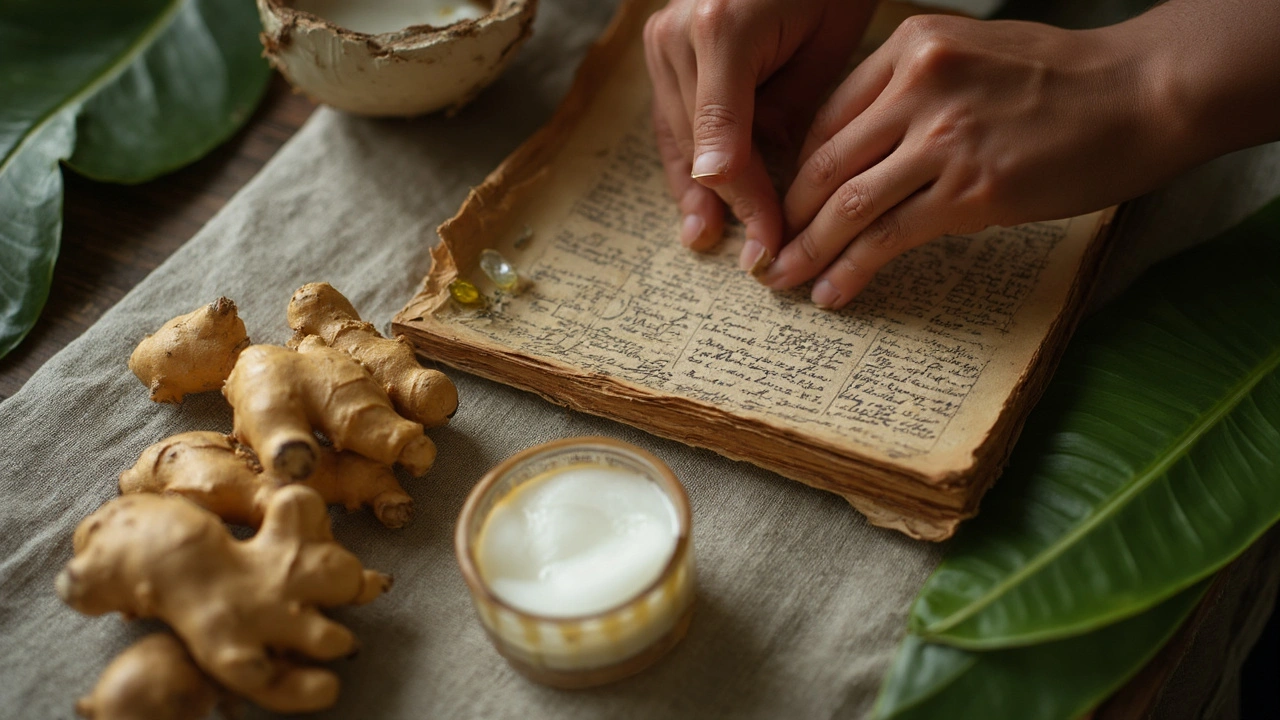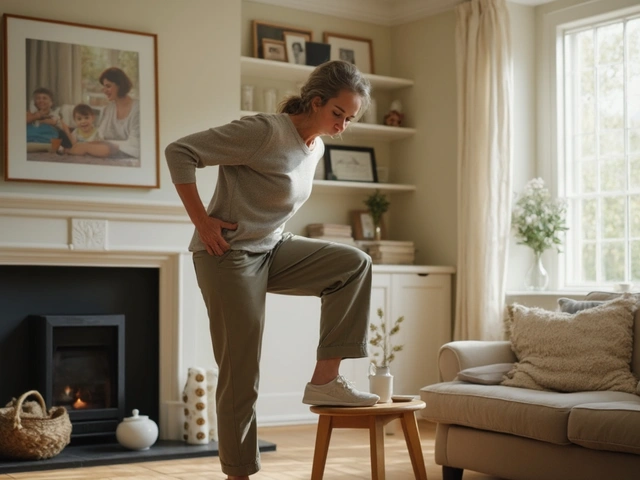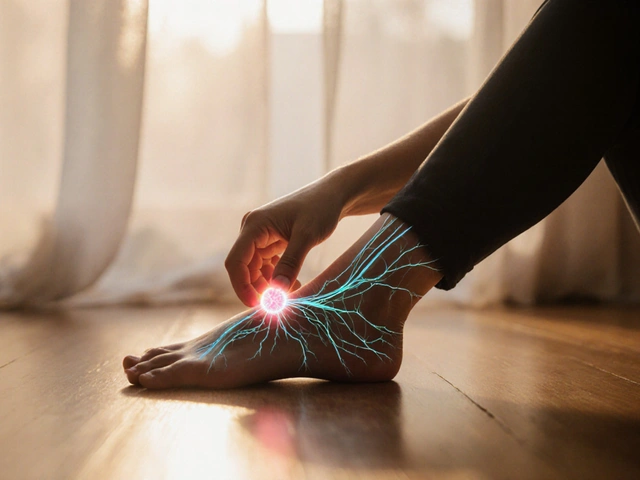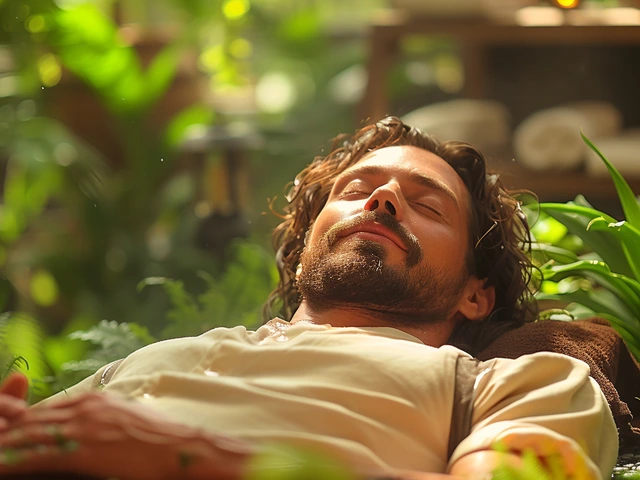Rediscovering Hilot: The Ancient Filipino Healing Art Explained

If you stumble upon a buzzing, aromatic massage clinic in Manila, chances are they've got a secret weapon: Hilot. This ancient Filipino healing art's legend runs deeper than the archipelago’s coral reefs. Forget spa fads and Western buzzwords—Hilot is about reconnecting bones, balancing energies, and keeping your body's mysterious pathways in check. Locals often talk about it like they talk about mangoes and fiestas—with pride, nostalgia, and a hint that you’ll never really understand unless you experience it firsthand. Just ask my cousin in Cebu who swears her migraines vanish after every session. Hilot isn’t some lost jungle relic—it’s alive and morphing, mixing science and spirit, rolling from grandmothers' hands into hip city wellness hubs. Ready to see what makes Hilot tick?
The Roots of Hilot: Ancient Traditions in Modern Times
Hilot’s story doesn’t start with textbooks. Long before city doctors and pharmacies popped up in the Philippines, healers called manghihilot were the community’s go-to fixers—mending broken bones, soothing swelling, and even straightening mild scoliosis. What’s wild is how their wisdom came from the land: coconut oils, banana leaves, herbs like sambong and lagundi, and a knack for feeling out what’s off in your muscles and energy lines. This stuff’s been passed down for generations, and not because someone drew up a curriculum, but because it worked well enough that every Filipino family has a Hilot story (or two) to tell.
Filipino families in remote barrios often trusted Hilot more than city medicine, sometimes for lack of access, sometimes because it just felt more personal. Instead of treating people as a puzzle of symptoms, manghihilot would listen gently to your story, look into your lifestyle, and talk with your family. Was it all just superstition? Not quite. In 2007, the Philippine Department of Health declared Hilot a recognized traditional health care modality. That’s official, with proper certifications and training programs (yup, you can get a license!). Once considered old wives’ lore, Hilot now appears in hospitals, wellness centers, and even retreats far beyond the islands.
The rituals aren’t random. Hilot draws from pre-colonial animist beliefs, where illness might come from unbalanced “loob” (inside) and “labas” (outside)—a view not too far from concepts like Chinese Qi or Indian prana. You’ll spot the healer’s hands more than fancy gadgets. The tools? Often just coconut oil, heated banana leaves, keen observation, and a dash of intuition honed through hundreds of hours with mentors. Some sessions start with prayers or blessings, blending folk Catholicism into the process. You might laugh at first, but it all settles you in for what’s coming.
Instead of neat timelines, Hilot’s history is more like a woven mat—threads from indigenous Visayan, Tagalog, and Ilocano cultures, each version with its own tweaks. Sometimes it’s about fixing sprains with deft bone maneuvers; other times, it could be about easing a fever by massaging out what’s called "lamig" (roughly: trapped cold or stagnant energy). Hilot grew with its people, weaving in new elements but stubbornly holding to what works. Today, it sits at a crossroads: respected tradition, living culture, and promising practice in the global world of alternative medicine.
Techniques and Practices: How Hilot Works Its Magic
Here’s where it gets juicy. You might expect candles, soft music, and aromatic oils—and yes, sometimes you’ll get those. But Hilot’s core isn’t fancy light—it’s the powerful, well-trained hands of the manghihilot. They scan your back and limbs with their fingertips, searching for unevenness, swelling, or heat that signals underlying problems. It’s less about textbook anatomy and more about “pakiramdam”—the healer’s sixth sense, shaped by experience. Once they spot a blockage, they’ll use pressures, strokes, and kneading to work the congestion out.
Manghihilot swear by coconut oil, often infused with pungent local herbs. Not just for the scent—these oils reduce friction, nourish skin, and bring those herbal benefits right in. Some sessions involve hot banana leaves, laid across your back to warm up knots and loosen up “lamig.” You might hear popping sounds when joints are readjusted or feel warmth flood tired muscles as circulation ramps up. One thing’s for sure: you’ll know when the tension goes, because relief comes so suddenly it almost feels supernatural.
The session adjusts based on your needs. Muscle pain? They’ll use deeper strokes. Bone alignment issues? Hilot gets hands-on, sometimes manipulating joints in a way that hints at chiropractic skills, but softer and guided by intuition rather than strict formulas. Chronic headaches, digestive issues, and even stress can find relief under these hands. Unlike Western massage, Hilot doesn’t stop at the muscles. It encompasses “enerhiya,” the Filipinos’ word for life force. If your flow feels off, the manghihilot might trace invisible paths from your spine to your feet, working blockages you didn’t know existed.
Modern Hilot now blends old tools with new tricks. Some healers use acupressure or reflexology maps, giving global wellness fans something to relate to. Still, at its heart, Hilot remains rooted in touch, herbal remedies, and intuitive care. You might finish a session feeling lighter, sleepier, or oddly energised. There's no generic script—each Hilot session is tailor-fit for you. For people dealing with injury recovery, everyday aches, or a sense that “something feels off,” Hilot can stand beside other therapies—sometimes the one thing that finally works.
| Item | Local Term | Description |
|---|---|---|
| Coconut Oil | "Langis ng niyog" | Main massage oil, sometimes infused with herbs |
| Banana Leaves | "Dahon ng saging" | Heated and applied to aid muscle relaxation |
| Healer | "Manghihilot" | Practitioner, often trained by family tradition |
| Muscle Knots | "Lamig" | Blockage or stagnant energy |
Want to try Hilot at home? Warm coconut oil, relax in a quiet room, and gently massage tight spots on your back or legs. If you’ve got banana leaves handy (lucky you if in the tropics), lay a warm one across your back for a natural heating pad. It’s not a replacement for an expert, but it lets you channel a sliver of Hilot’s wisdom. The therapy is gentle, respectful, and always personal.

The Science and Benefits Behind Hilot
So, does Hilot hold up beyond folklore? Western researchers now look closer. A 2021 study out of the University of the Philippines Manila compared Hilot therapy to Swedish massage and chronic pain medication among lower back pain patients. Guess what they found? While all helped, Hilot not only relieved pain but also reduced anxiety and improved sleep for most participants—without any meds. The soothing heat, careful manipulation, and the act of being cared for seem to downplay cortisol (your stress hormone). That’s a scientific win in my book.
Treatments often succeed because Hilot doesn’t just target symptoms but seeks out root causes. For example, recurring headaches sometimes trace back to neck tension or poor posture, which the manghihilot can sense and correct. Chronic fatigue? Hilot interprets this as slow-moving “enerhiya”—something hands-on treatment just might boost. There’s growing chatter in Filipino medical schools about integrating Hilot into holistic frameworks, especially for pain management and stress reduction.
But science is only half the story. Trust and comfort during Hilot sessions are surprisingly powerful. When you believe in your healer—and when the healer listens without rushing—the body relaxes at a level that catalyses healing. Studies show that simply being listened to can lower blood pressure! It’s the opposite of today’s 10-minute check-ups. Hilot is slow, attentive, and lets your body catch up to your mind.
Are there risks? Like all bodywork, Hilot isn’t for everyone. If you’ve got fractures, open wounds, or certain medical issues, consult your doctor before booking a session. Sometimes, what feels like magic touch might be best paired with regular healthcare. And skip the “bone cracking” sessions if your body isn’t up for it; a good manghihilot will always ask about your aches, pains, and history before working on you.
People use Hilot not just for physical pain, but for battling anxiety, insomnia, and even emotional wounds. The repeat visits create a bond; you know your practitioner, and they know you. It’s healthcare with a human face, and plenty of gentle coconut oil massages. For expats and overseas workers, seeking a Hilot session is now a way to reconnect to home, returning not just to physical comfort but cultural belonging too.
How Hilot Fits into Modern Wellness Trends
In 2025, the wellness world’s attention is splitting between high-tech hacks (think AI-driven health apps) and deep-rooted traditions. Hilot fits the second camp perfectly. Pilates and yoga fans may now book Hilot sessions to rebalance after a tough workout. People burned out from office jobs or overwhelmed by digital overload often crave that hands-on reset you just can’t swipe for. Hilot brings intuition to the mix—a gentle nudge that health isn’t just about numbers on a smartwatch but about real, responsive touch.
Wellness retreats are now popping up in places like Batangas and Siargao, offering Hilot alongside meditation, cacao ceremonies, and river dips. Even here in Perth, I found a small Filipino community offering Hilot as a wellness option for everyone from new mums to tradies with sore backs. While traditional manghihilot still run home-based clinics, some now work side-by-side with physiotherapists and even sports doctors. A survey by the Asian Traditional Medicine Alliance in 2024 showed that 68% of Filipino-Australians had tried or regularly sought out Hilot—mainly for stress and muscular pain relief.
Packages often blend Hilot with Western therapies: start with a relaxing Hilot massage, then follow up with acupuncture or guided stretching. For those who roll their eyes at new-agey talk, knowing the science behind pressure points, circulation, and pain reduction helps. For believers in traditions, stepping into a room scented with coconut and herbs feels like stepping back into childhood. Spots offering Hilot bookings now stress their practitioners’ backgrounds, often highlighting lineage and certification—a far cry from days when only grannies in remote towns practiced the skill.
Hilot also brings body positivity into play. Rather than focusing on “fixing flaws,” it’s about supporting your body’s journey—whatever shape or age you’re in. Unlike some fitness crazes that chase impossible standards, Hilot focuses on gentle realignment and relief, celebrating the body’s own wisdom. People love the blend of wisdom, care, and decent muscle work. And most come back, bringing friends and family, because it’s hard to match that post-Hilot glow any other way.
Social media now sees a boom in #Hilot hashtags, with short clips showing everything from heated banana leaf wraps to satisfying before-and-afters after one session. In a world overrun by trends that fade fast, Hilot doesn’t just survive—it thrives, by staying stubbornly personal and rooted in tradition.

Tips to Experience Hilot Safely and Effectively
If the idea of soothing palm strokes and the scent of herbal oil has you booking a Hilot session, a little prep goes a long way. First, hunt for a certified manghihilot. That means someone who’s trained—not just anyone advertising massage skills online. Ask about their training, background, and if you’re in Australia or elsewhere, make sure they know how to blend traditional methods with knowledge of modern health standards. Always share your medical history, even if it’s just a sprained ankle or old surgery scar. Good practitioners care about your story as much as your muscles.
Dress comfortably, bring a towel (for oil spills or lying down), and avoid heavy meals beforehand. Some people feel sleepy or deeply relaxed after; plan downtime, not a tight schedule, post-session. If you’re trying out home Hilot practices, start slow. Warm oil in your hands first, and use smooth, light strokes before pressing into knots. Never self-treat broken bones or fresh injuries!
- Stay hydrated (massage can release built-up toxins).
- Note your pain levels and communicate—if something hurts, speak up.
- Be wary of online tutorials that skip safety tips. Hilot is best learned through observation or qualified instruction.
- If you love trying new things, add a Hilot session to your spa menu next time you travel in Southeast Asia or visit a Filipino community.
Ready for something amazing? Next time back pain or tension has you skipping coffee catch-ups or workouts, remember Hilot. It might shake up how you see healing, body wisdom, and the blend of touch and trust. Who knows? One session, and you could end up telling your own “I swear it worked!” story, right beside the locals.





